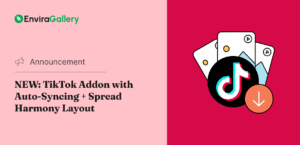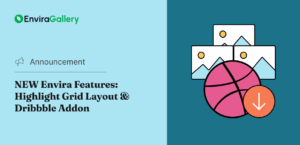Want to make sure search engines can find and index all your website content? A WordPress sitemap makes that easy! It acts like a roadmap, helping search engines like Google and Bing understand your site structure and rank your pages appropriately.
If you’re running a WordPress site, generating a sitemap is simple—no coding required. In this guide, we’ll show you step-by-step how to create a WordPress sitemap. We’ll also cover why sitemaps matter, how to customize them, and how to submit them to Google for better SEO.
Let’s get started!
What Is a Sitemap and Why Does It Matter?
A sitemap is a file that lists all the important pages and media on your site, making it easier for search engines to crawl and index them. It’s a crucial part of search engine optimization (SEO), and there are two main types:
- XML Sitemap – Created for search engines to index your site properly.
- HTML Sitemap – Designed for visitors to navigate your content.
For most websites, an XML sitemap is the key to improving search engine rankings, as it ensures Google finds all your posts, pages, and media. Let’s walk through how to create one in WordPress!
How to Create a Sitemap in WordPress
The easiest way to generate a sitemap in WordPress is with the All in One SEO (AIOSEO) plugin. It’s our favorite SEO plugin for WordPress and the best XML sitemap generator available.

AIOSEO automatically creates and updates your sitemap without any manual effort and is packed with tons of other SEO features. For this tutorial, we’ll use the free version to generate our sitemap.
That said, if you want to boost your search rankings, I highly recommend AIOSEO Pro. As an online marketer and SEO specialist, I consider the Pro version a must-have in my toolkit. It offers everything you need for SEO, from content analysis and schema markup to a redirection manager and link assistant. Plus, it also lets you generate a video sitemap, which is crucial for media-heavy websites.
Step 1: Install and Activate AIOSEO
To get started, you’ll need to install the AIOSEO plugin on your WordPress website:
- From your WP admin menu, navigate to Plugins » Add New Plugin.
- Search for AIOSEO in the search bar.
- Click Install and then Activate when the button changes.

Step 2: Enable Your XML Sitemap in WordPress
With AIOSEO installed, the XML sitemap feature is enabled by default. To check your sitemap, go to AIOSEO » Sitemaps in your WordPress dashboard. Here, you’ll see that the Enable Sitemap option is turned on. You can view your sitemap by clicking Open Sitemap.

You can also view your sitemap by simply entering yoursite.com/sitemap.xml in your browser. This file is what search engines will use to crawl your site and index its content.

Step 3: Customize Your Sitemap Settings
AIOSEO allows you to customize your sitemap to control which content gets indexed. From AIOSEO » Sitemaps, scroll down to the Sitemap Settings section. First, you can select whether or not to enable a sitemap index. An index is recommended if your website has 1,000+ URLs, but smaller sites can disable it.

Below this, you can choose whether to include or exclude specific content types, such as blog posts, pages, categories, and custom post types. By default, all Post Types and Taxonomies are included, but if you uncheck the box, you can specify what to include by checking the options individually.

If you’re an Envira Gallery user, you can even include Galleries, Albums, and Picture Tags in your sitemap. This ensures that search engines properly index your media collections, which is extremely important if you run a photography or portfolio site.
Finally, you can control whether Date and Author archives are included in your sitemap. WordPress automatically generates these archives when you publish new content. However, we suggest keeping these options turned off, as they typically don’t offer much value to search engines.

When toggled on, the Advanced Settings section will let you exclude specific content from your sitemap by URL or a term filter, but most users don’t need to fool with these options.
Once you’ve made your selections, click Save Changes at the top.
Step 4: Submit Your Sitemap to Google Search Console
Instead of manually submitting your sitemap to Google Search Console every time you update your site, you can connect AIOSEO with Search Console to automate the process. This ensures that Google is always aware of changes to your site and can index new content faster.
To set this up, navigate to AIOSEO » General Settings and find the Webmaster Tools tab. Click on Google Search Console and follow the prompts to grant access to AIOSEO and verify your site.

If you haven’t added your site to Google Search Console yet, you can check out this tutorial to learn how. Once connected, AIOSEO will automatically submit and update your sitemap, ensuring that Google stays informed about new pages, posts, and media without any extra effort on your part.
Step 5: Verify Your Sitemap is Working
After connecting AIOSEO to Search Console, you’ll see a message verifying that your sitemap is synced with GSC on the AIOSEO » Sitemaps page.

You can also head over to Google Search Console, select your website, and navigate to the Sitemaps in the menu. You should see your sitemap listed there, and you can check that Google has successfully processed it.

Enhance Your WordPress Sitemap with Envira Gallery
If your website features a lot of images, ensuring they are properly indexed can significantly boost your SEO. As the best gallery plugin for WordPress, Envira Gallery offers a Deeplinking Addon, which helps search engines better understand and rank your gallery content.

The Deeplinking Addon gives each image in your galleries a unique URL, making it easier for search engines to crawl and display them in search results. Additionally, this addon automatically adds image schema markup, which enhances how your photos appear in Google Image Search and increases the likelihood of them ranking for relevant queries.
With this feature, your Envira Gallery images don’t just contribute to a visually appealing website—they actively work to improve your SEO. By including these deep-linked images in your XML sitemap, search engines can properly index each gallery item, increasing your visibility online.
Frequently Asked Questions
What is the best WordPress sitemap generator?
The best WordPress sitemap generator is All in One SEO (AIOSEO). AIOSEO is a powerful SEO plugin that automatically generates XML sitemaps to help search engines crawl and index your website more efficiently. It automatically creates and updates sitemaps while offering extensive customization options. The plugin also supports video sitemaps, news sitemaps, and HTML sitemaps, making it an all-in-one solution for improving your site’s SEO.
How do I submit my sitemap to Google?
To manually submit your sitemap to Google, log into Google Search Console, select your website from the properties dropdown menu, and navigate to Sitemaps from the left menu. Here, you can enter your sitemap URL (e.g., https://yoursite.com/sitemap.xml) and click Submit.
Can I exclude pages from my WordPress sitemap?
Yes, you can exclude pages from your WordPress sitemap using an SEO plugin like All in One SEO (AIOSEO). AIOSEO makes it easy to remove specific pages, posts, or custom post types from your sitemap without affecting the rest of your site’s SEO. To exclude pages from your sitemap in AIOSEO:
- Go to AIOSEO » Sitemaps from your WordPress dashboard.
- Scroll down and toggle on Advanced Settings.
- Add the URLs you want to exclude in the Exclude Posts/Pages field, or you can exclude all pages that are assigned a specific term using the Exclude Terms field.
You can also exclude entire post types, taxonomies, or individual URLs from the sitemap using AIOSEO’s intuitive settings.
Do I need an HTML sitemap for my WordPress site?
An HTML sitemap can be beneficial for your WordPress site, but it’s not always necessary. Unlike an XML sitemap, which helps search engines crawl and index your pages, an HTML sitemap is a user-friendly page that lists your site’s important content in an organized structure.
If your website has a lot of content, an HTML sitemap improves navigation by helping visitors find key pages quickly. However, if your site has a simple navigation menu and well-structured internal links, an HTML sitemap may not be necessary. Many modern themes and plugins also provide dynamic menus and breadcrumbs that serve a similar purpose.
As you can see, creating a sitemap for WordPress websites is one of the easiest ways to improve your SEO and ensure search engines can find all your content. With AIOSEO, you can generate and customize your sitemap in just a few clicks! If your website features galleries, don’t forget to include them in your sitemap so your photos get indexed properly.
Not using Envira Gallery? Get started today!
If you enjoyed learning how to create a sitemap for WordPress, be sure to check out How to Integrate Google Drive with Your WordPress Media Library.
Don’t forget to check out our blog and follow us on X (Twitter) for the best photography tips, resources, and WordPress tutorials.
















